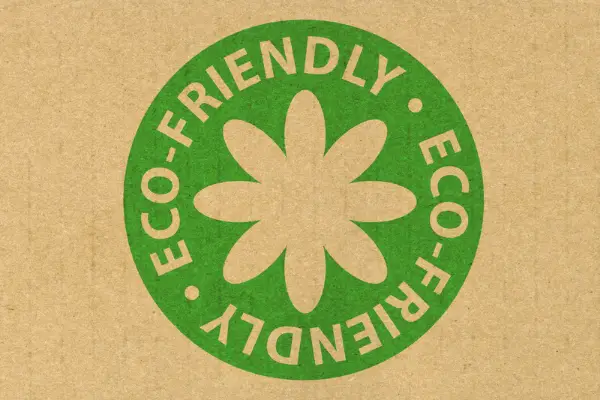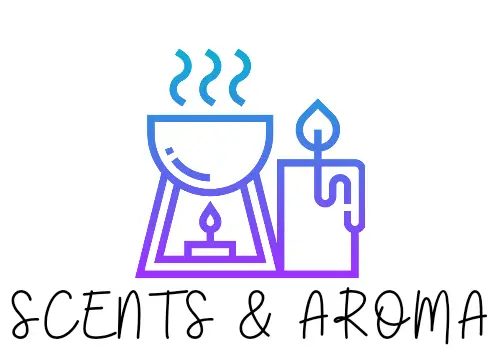People across the globe are becoming more and more aware of our need to be kinder to the planet. Once upon a time, we thought nothing of lighting up a paraffin wax candle. Recently, however, we’ve generally started to realise that burning candles isn’t as sustainable as we would like it to be.

As we look for alternatives to the widespread paraffin candles, one alternative wax type that comes up often is soy wax. But is soy wax eco-friendly and sustainable? If we compare soy wax to paraffin wax, yes, soy wax is far more sustainable and eco-friendly. However, when we compare it to other waxes, it isn’t the best option out there if we’re looking for sustainability and being eco-friendly.
Let’s look closer at how eco-friendly, and sustainable soy wax really is.
Is burning soy wax more eco-friendly than paraffin wax?
So, first things first, soy wax is made from soybeans. Meanwhile, paraffin wax is a petroleum product. Being a fossil fuel, this cannot be renewed. What’s more, collecting crude oil is harmful to the environment. Finally, paraffin wax isn’t biodegradable.
If therefore, we compare soy wax and paraffin wax, there’s a clear winner. Soy wax is plant-based, which means it’s 100% renewable and biodegradable.
Are soy wax candles sustainable?
Since soy wax doesn’t rely on chemicals during its manufacture, it is environmentally sustainable. However, many critics claim that while the manufacture of soy wax is sustainable, there are concerns in other areas.
According to worldwildlife.org, the soybean industry is 15 times larger than it was during the 1950s. Around 80% of soybeans are grown in just three countries: the U.S., Argentina, and Brazil. The plant is such a versatile product that it is used in many different products. But, what is it about its production that draws concern?
As we’ve mentioned, the demand for soybeans has grown hugely. This has led to deforestation on a huge scale. In addition, the increase in soybean production has caused soil erosion, a rise in greenhouse gas emissions, poorer water quality, and has had negative social impacts too.

Deforestation because of soy farming
In order to make room for so many soy plants, trees and vegetation have been cleared from the land. Unfortunately, with this comes the destruction of plant and animal habitats. In rainforest areas, like in South America, this is a huge concern as these areas are home to many endangered species. If habitats are destroyed, we risk making some species of animals extinct.
Soil Erosion due to soy crops
Growing soy in the same place year on year results in poor quality soil that is highly erodible. As a result, fertile land is lost, and there is an increased risk of flooding and pollution.
Greenhouse Gases as a result of soy growth
When land is cleared to grow soybeans, and when the beans are processed into wax, the equipment used produces greenhouse gases.
Poorer water quality
Many chemicals are used in the production of soybean crops, including pesticides and fertilisers. While these increase yield and prevent diseases, they also get into water sources and impact the water quality.
Social impact of increasing soy growth
The increase in land use and natural resource pollution has meant people have moved away from the areas. This has a big impact on small farms and natives who had lived in the area before it was taken over by soy production. As well as this, the increase in labour needed means that some areas have treated workers unethically in order to produce enough crops.
Is soy wax biodegradable?
Soy wax is made from soybeans and so is biodegradable. However, it’s important to check the list of ingredients as manufacturers often add harmful chemicals or synthetic materials, which affects soy wax biodegradability.
Some candles that claim to be soy, for example, will also include some blended paraffin wax. Yet, because their main ingredient is soy, they will be labelled as such.
As long as soy wax is 100% natural, it is compostable.
Is soy wax bad for the environment?
Soy wax as a product is not at all bad for the environment. Its production, however, does raise some questions, as we’ve previously mentioned. While it’s certainly better than paraffin wax, some other waxes are even more eco-friendly.
Beeswax
As far as sustainability is concerned, beeswax is arguably the best alternative. It burns cleanly and is long-lasting. However, it is not vegan, which puts some people off.
Coconut wax
This, of course, is wax made from coconuts. Generally speaking, coconuts are much more sustainable than soybeans. Coconuts don’t need lots of pesticides to grow well, and they are largely produced by small farms, which means that there are fewer impacts in terms of society and deforestation. In addition, coconut wax candles are clean-burning, long-lasting, and vegan.
For more information on Soy Wax vs Paraffin wax vs Beeswax have a look at my handy article.
Is soy wax toxic?
No. Even though soy wax isn’t the most sustainable of waxes, it is most definitely non-toxic and burns very cleanly. However, it’s worth checking that your soy wax candle is 100% soy because paraffin wax contains harmful substances like carcinogens.
I have a full guide to if Soy wax is toxic, why not check it out for the full details
Final thoughts
There’s no denying that soy has increased in popularity over recent years. It’s a huge industry with production continuing to increase as demand rises – a true capitalist’s dream.
While soy wax is much more eco-friendly and sustainable than paraffin wax and other synthetic waxes, it is not the most environmentally friendly wax that exists.
However, the soy wax itself isn’t at fault. Rather, it is soy wax production that causes environmental problems and raises questions about its sustainability. If soybeans were to grow without destroying forests and habitats, soy wax would be much more environmentally friendly.
Thankfully, people are beginning to recognise the problems that soybean production has caused, and some leading companies have started to produce soy that is produced and sourced sustainably.
Once soy is farmed in an eco-friendly and sustainable way, there’s really nothing bad about it at all. It is biodegradable and non-toxic. Soy wax candles burn cleanly and last a really long time.
One thing to make sure of, though, is that the candle is 100% soy wax. Many manufacturers might add in fragrances or other waxes to their candles. To be given the ‘soy’ label, the candle only has to be 51% soy. Even candles that say they are 100% soy might go through processing with a little bit of paraffin. So it’s always worth checking the ingredients label for any unnatural additives and synthetic products.
Finally, while remembering that soy wax isn’t natural, unlike soy, we need to be more aware and take more interest in the production process of our candles. No matter what type of candle wax we burn, it is not just the ingredients that account for a product’s eco-friendliness and sustainability, but its manufacture and production too.
- Can You Put Perfume In A Humidifier? (Read First) - September 17, 2022
- Can You Put Essential Oil In A Steam Mop? (Safety Advice) - September 17, 2022
- How To Make Lavender Oil At Home ( Candles And Diffusers) - September 9, 2022

